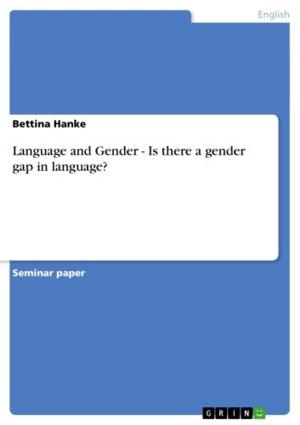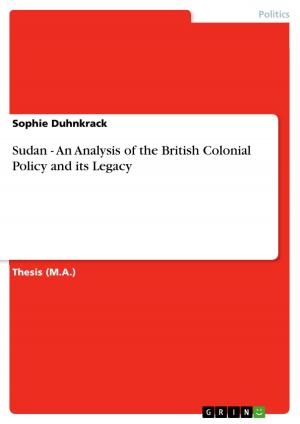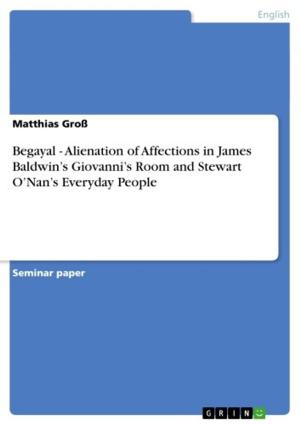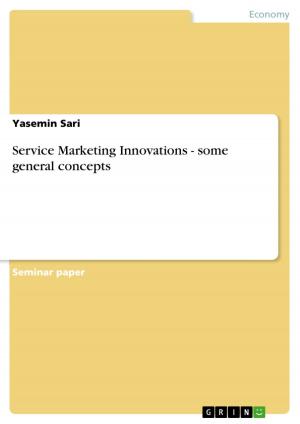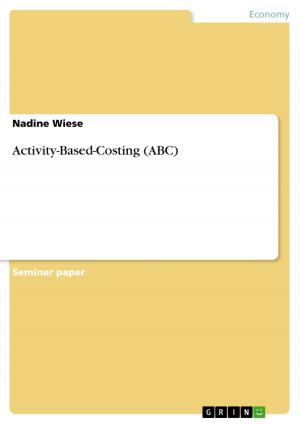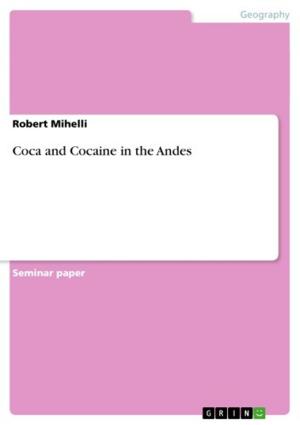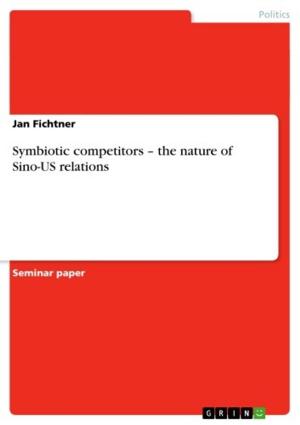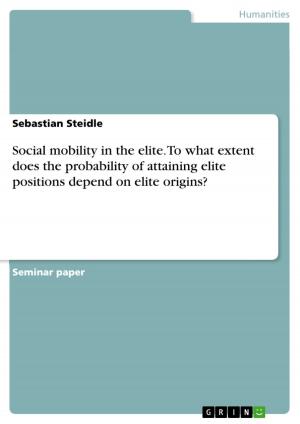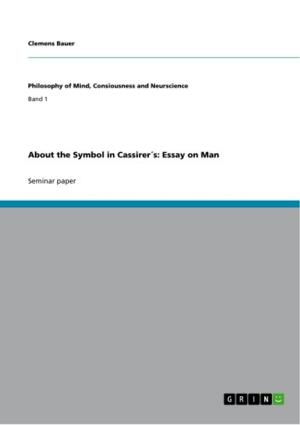| Author: | Christina Pistor | ISBN: | 9783640514229 |
| Publisher: | GRIN Publishing | Publication: | January 19, 2010 |
| Imprint: | GRIN Publishing | Language: | English |
| Author: | Christina Pistor |
| ISBN: | 9783640514229 |
| Publisher: | GRIN Publishing |
| Publication: | January 19, 2010 |
| Imprint: | GRIN Publishing |
| Language: | English |
Seminar paper from the year 2009 in the subject English Language and Literature Studies - Linguistics, grade: 1,0, University of Kassel (Linguistik - Semiotik), course: Signs and Metasigns, Sense and Nonsense in Lewis Carroll's Alice Books, language: English, abstract: Charles Lutwidge Dodgson aka Lewis Carroll plays with language conventions in his books about Alice, a seven year-old girl who experiences the madness of Wonderland and the Looking-Glass World. As a logician and mathematician, he also had an interest in the logic of language systems: 'He invented a great many mathematical and word puzzles, cipher methods [...]' (Gardner 2001: xviii). According to Auden (cited in Drews 1975: 351), 'eine der wichtigsten und mächtigsten Figuren' in Carroll's Alice books 'ist nicht eine Person, sondern die englische Sprache'. By breaking the rules of language we are accustomed to, Carroll draws the reader's attention to the conversational rules and standards that are unconsciously applied in everyday speech. As a result, the reader becomes aware of the underlying structures of a language system. Carroll confronts his protagonist Alice with the illogical madness of his fantasy worlds. Alice appears to the reader as a girl who has 'a strong sense that her environment is comprised of clear, logical and consistent rules and features' (Gatten 2009: Analysis of major characters, para. 1). Alice's convictions, however, are frustrated by the creatures in Wonderland and Looking-Glass World. She has to discover that nothing is in accord with the real world in Wonderland - not even habitual language use. 'Anything is possible in Wonderland, and Carroll's manipulation of language reflects this sense of unlimited possibility' (Gatten 2009: Themes, Motifs and Symbols, para. 6 [Language]). Carroll deviates from the conditions of normal antonym use in many text passages. It is the intent of this paper to uncover the anomalies of language in Carroll's novels with regard to the deviation of opposites, which we need not only for the early acquisiton of language, but also in everyday conversation. For this purpose, types of opposition will be exemplified in the following and compared to the forms of opposites that Carroll used in his famous novels 'Alice's Adventures in Won-derland' (1865) and 'Through the Looking-Glass and What Alice Found There' (1872), in order to analyze the effects Carroll's individual style of writing has on the reader.
Seminar paper from the year 2009 in the subject English Language and Literature Studies - Linguistics, grade: 1,0, University of Kassel (Linguistik - Semiotik), course: Signs and Metasigns, Sense and Nonsense in Lewis Carroll's Alice Books, language: English, abstract: Charles Lutwidge Dodgson aka Lewis Carroll plays with language conventions in his books about Alice, a seven year-old girl who experiences the madness of Wonderland and the Looking-Glass World. As a logician and mathematician, he also had an interest in the logic of language systems: 'He invented a great many mathematical and word puzzles, cipher methods [...]' (Gardner 2001: xviii). According to Auden (cited in Drews 1975: 351), 'eine der wichtigsten und mächtigsten Figuren' in Carroll's Alice books 'ist nicht eine Person, sondern die englische Sprache'. By breaking the rules of language we are accustomed to, Carroll draws the reader's attention to the conversational rules and standards that are unconsciously applied in everyday speech. As a result, the reader becomes aware of the underlying structures of a language system. Carroll confronts his protagonist Alice with the illogical madness of his fantasy worlds. Alice appears to the reader as a girl who has 'a strong sense that her environment is comprised of clear, logical and consistent rules and features' (Gatten 2009: Analysis of major characters, para. 1). Alice's convictions, however, are frustrated by the creatures in Wonderland and Looking-Glass World. She has to discover that nothing is in accord with the real world in Wonderland - not even habitual language use. 'Anything is possible in Wonderland, and Carroll's manipulation of language reflects this sense of unlimited possibility' (Gatten 2009: Themes, Motifs and Symbols, para. 6 [Language]). Carroll deviates from the conditions of normal antonym use in many text passages. It is the intent of this paper to uncover the anomalies of language in Carroll's novels with regard to the deviation of opposites, which we need not only for the early acquisiton of language, but also in everyday conversation. For this purpose, types of opposition will be exemplified in the following and compared to the forms of opposites that Carroll used in his famous novels 'Alice's Adventures in Won-derland' (1865) and 'Through the Looking-Glass and What Alice Found There' (1872), in order to analyze the effects Carroll's individual style of writing has on the reader.

